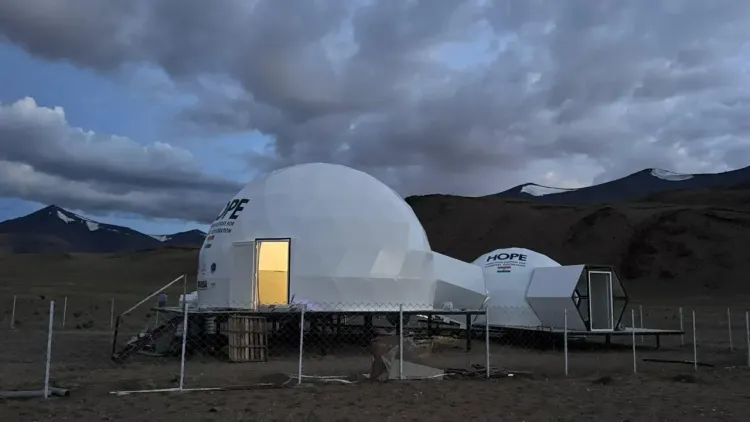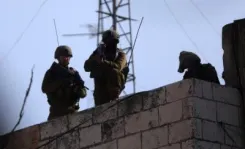What is ISRO’s 10-day HOPE analogue mission in Ladakh?

Synopsis
Key Takeaways
- The HOPE analogue mission is ISRO's first of its kind in Ladakh.
- The mission tests human endurance in conditions simulating interplanetary environments.
- The data collected will inform future human exploration missions.
- Collaboration with various institutions enhances the mission's scientific validity.
- Tso Kar was chosen for its environmental similarities to early Mars.
New Delhi, Aug 2 (NationPress) Marking a pivotal step in India's aspirations for human space exploration, the Indian Space Research Organisation (ISRO) has initiated the nation's inaugural analogue mission in Ladakh.
The analogue facility -- the Human Outer Planet Exploration (HOPE) station -- was officially opened by Dr. V. Narayanan, the Chairman of ISRO, featuring aerospace engineer Rahul Mogalapalli and astrobiologist Yaman Akot in a controlled environment.
During the inauguration, Narayanan remarked, “This analogue mission transcends mere simulation; it serves as a rehearsal for our future endeavors.”
For the next 10 days, the team will reside at the analogue site located in Tso Kar, Ladakh, rigorously testing their physical and psychological resilience under interplanetary conditions.
According to ISRO's announcement via social media platform X, “The mission is scheduled from August 1 to 10, 2025, at Tso Kar, Ladakh (elevation: 4,530 meters).”
This mission is part of India's broader strategy to send astronauts into space by 2027 and to the Moon by 2040 as its space program continues to evolve.
ISRO emphasized that “This mission signifies a crucial milestone in India’s preparations for upcoming human spaceflights to Low Earth Orbit, as well as Moon and Mars exploration missions.”
So, what exactly is the HOPE station?
The HOPE station is a collaborative effort between a Bengaluru-based space technology firm, Protoplanet, and ISRO.
It features a specially designed 8-meter diameter habitat module for crew living, alongside a 5-meter diameter utility module for operational support, all interconnected for efficient workflow.
ISRO noted, “Tso Kar valley was meticulously chosen for this analogue mission due to its remarkable environmental similarities to early Mars, characterized by high UV flux, low air pressure, extreme cold, and saline permafrost.”
“Situated in one of the most Mars-like environments on Earth, HOPE aims to replicate planetary conditions to assess human physiological responses, validate mission protocols, and test spaceflight technologies.
The 10-day mission will include experiments curated from various national institutions including IIST, RGCB Trivandrum, IIT Hyderabad, IIT Bombay, and the Institute for Aerospace Medicine in Bangalore.
These experiments will explore epigenetic, genomic, physiological, and psychological responses of the two analogue mission crew members, validate health-monitoring protocols, planetary surface operations, and refine sample collection and microbial analysis techniques, as stated by ISRO.
“The invaluable data generated from these analogue missions will lay the groundwork for designing protocols and infrastructure for future Indian human exploration missions, offering crucial insights into technology performance, crew workflows, and environmental adaptation,” the space agency concluded.









